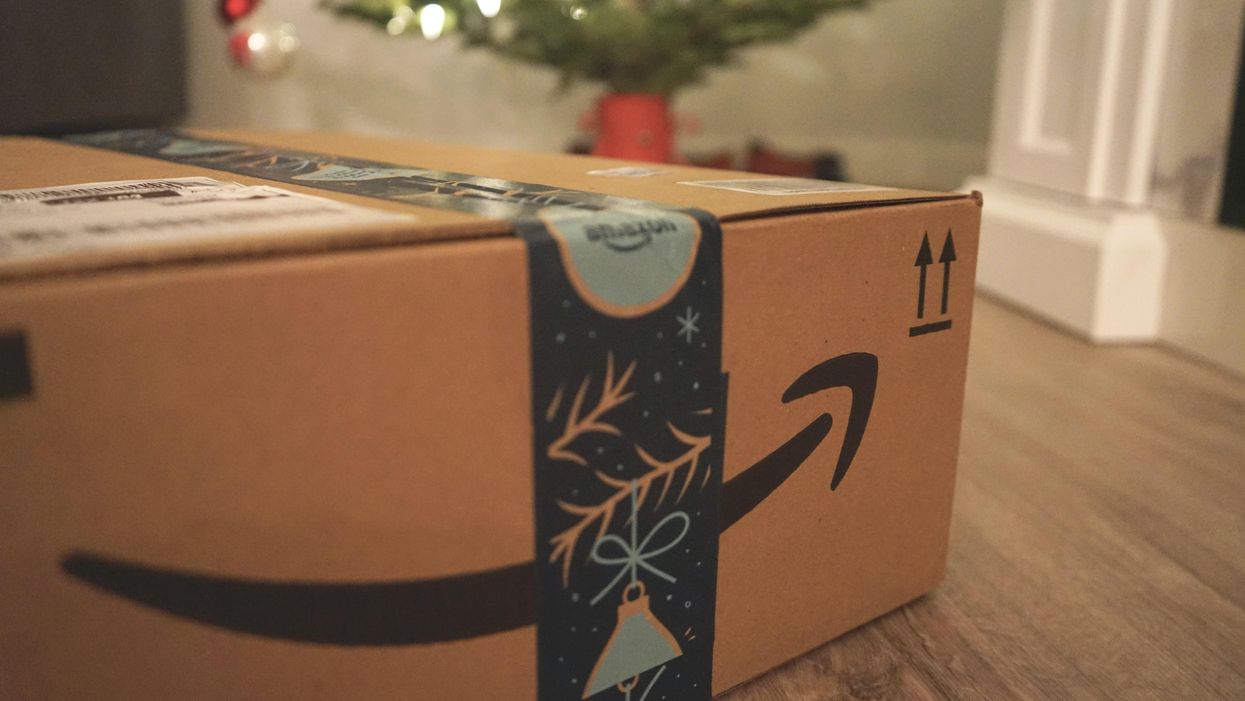Retail Channels
17 August 2022
Amazon will raise FBA fees for the holidays
A surcharge that averages 35 cents per item will be in place from October-January.

Amazon for the holidays. (Photo by Wicked Monday on Unsplash)
A surcharge that averages 35 cents per item will be in place from October-January.

Amazon is set to raise feest this holiday season for sellers who use Fulfillment by Amazon (FBA) to store and ship goods sold through its marketplace.
The company announced to third-party sellers on Wednesday that it will be increasing fees by an average of 35 cents per item sold using FBA in the US and Canada for the peak holiday season. The hike will be in place from Oct. 15, 2022-January 4, 2023.
In explaining the fee increase, Amazon wrote the following:
Our selling partners are incredibly important to us, and this is not a decision we made lightly. The entire industry sees increases in fulfillment and logistics costs during the holiday peak period due to the concentrated volume of shipments. We have previously absorbed these cost increases, but seasonal expenses are reaching new heights. As a result, we decided that similar to other carriers, we will implement a holiday peak fulfillment fee that applies during a timebound period each year.
The increase comes during a period of 40-year-high inflation, which has elevated costs for the company. Third-party sellers have already been the recipients of increases on one occasion during this time, as Amazon announced a 5% fuel surcharge in April that it said at the time would be temporary. This came after it made permanent changes to fees to account for rising supply chain-related costs in January. It has also raised fees for sellers using a program to ship to Mexico and Canada, and made inventory changes to classifications for the smallest and largest packages it ships.
It’s true that Amazon isn’t the only service that delivers ecommerce orders to raise fees for the high-volume holiday season. USPS has proposed a rate increase for commercial and retail parcels. Meanwhile, FedEx will implement rate hikes that focus on large customers of the carrier and oversize packages.
On one reading of these moves, Amazon is behaving more like one of the big carriers as it increasingly becomes one. But Amazon is unique in the services that FBA provides, and the role that third-party sellers play in its business. In its second quarter earnings report, the company said these sellers were responsible for 57% of sales on Amazon, which was a record. Revenue from third-party seller services rose 13% to more than $27 billion, a record for a non-holiday quarter. On the other hand, Amazon's overall sales from ecommerce fell 4%.
On the recently-completed Prime Day, Amazon said the growth of third-party seller sales outpaced Amazon’s, adding that customers spent over $3 billion on more than 100 million items from small businesses included in a program called the Support Small Businesses to Win Big sweepstakes. Nevertheless, sellers have said they face the same challenges with supply chain snarls and overstocked inventory as Amazon and other retailers.
The company has made some moves to bolster what it offers to sellers. This summer, it introduced tools for sellers to convert funds from Amazon to a bank account, and more easily manage compliance with Amazon policies. With fees continuing to increase, striking a balance between what it provides and what it charges will only become more important.Amazon partnered with Hexa to provide access to a platform that creates lifelike digital images.
A 3D rendering of a toaster from Hexa and Amazon. (Courtesy photo)
Amazon sellers will be able to offer a variety of 3D visualizations on product pages through a new set of immersive tools that are debuting on Tuesday.
Through an expanded partnership with Hexa, Amazon is providing access to a workflow that allows sellers to create 3D assets and display the following:
Selllers don't need prior experience with 3D or virtual reality to use the system, according to Hexa. Amazon selling partners can upload their Amazon Standard Identification Number (ASIN) into Hexa’s content management system. Then, the system will automatically convert an image into a 3D model with AR compatibility. Amazon can then animate the images with 360-degree viewing and augmented reality, which renders digital imagery over a physical space.
Hexa’s platform uses AI to create digital twins of physical objects, including consumer goods. Over the last 24 months, Hexa worked alongside the spatial computing team at Amazon Web Services (AWS) and the imaging team at Amazon.com to build the infrastructure that provides 3D assets for the thousands of sellers that work with Amazon.
“Working with Amazon has opened up a whole new distribution channel for our partners,” said Gavin Goodvach, Hexa’s Vice President of Partnerships.
Hexa’s platform is designed to create lifelike renderings that can explored in 3D, or overlaid into photos of the physical world. It allows assets from any category to be created, ranging from furniture to jewelry to apparel.

The result is a system that allows sellers to provide a new level of personalization, said Hexa CEO Yehiel Atias. Consumers will have new opportunity see a product in a space, or what it looks like on their person.
Additionally, merchants can leverage these tools to optimize the entire funnel of a purchase. Advanced imagery allows more people to view and engage with a product during the initial shopping experience. Following the purchase, consumers who have gotten a better look at a product from all angles will be more likely to have confidence that the product matches their needs. In turn, this can reduce return rates.
While Amazon has previously introduced virtual try-on and augmented reality tools, this partnership aims to expand these capabilities beyond the name brands that often have 1P relationships with Amazon. Third-party sellers are an increasingly formidable segment of Amazon’s business, as they account for 60% of sales on the marketplace. Now, these sellers are being equipped with tools that enhance the shopping experience for everyone.
A video displaying the new capabilities is below. Amazon sellers can learn more about the platform here.
Hexa & Amazon - 3D Production Powerhousewww.youtube.com